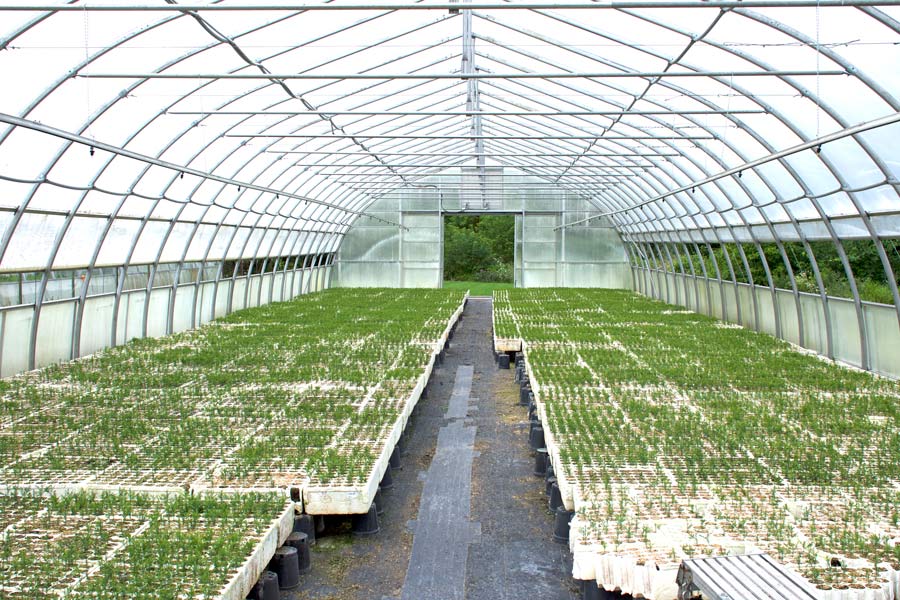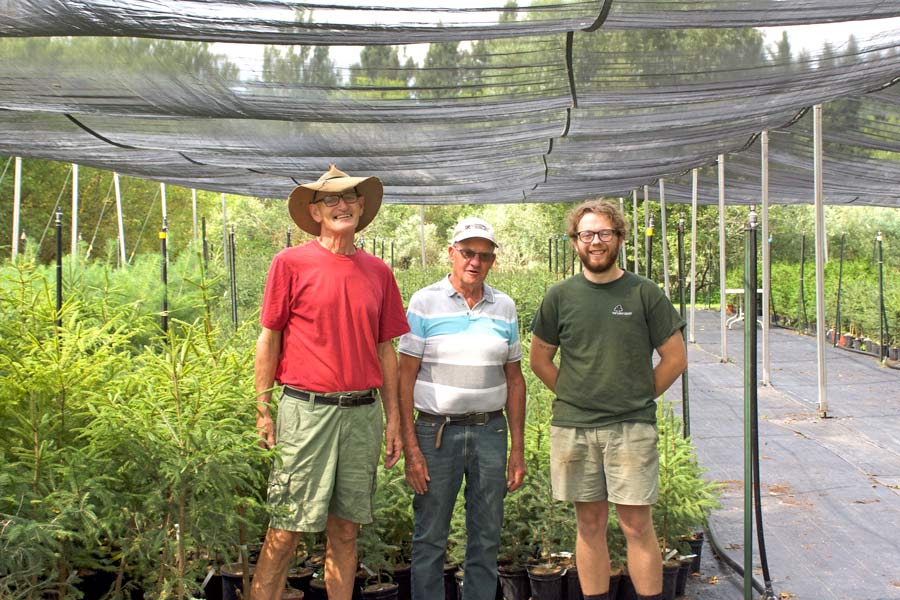WELLINGTON COUNTY – Despite having to endure major pandemic-related disruptions over the past 17 months, the county’s Green Legacy Program has continued to deliver.
In 2004, the tree-planting program started as an idea to plant 150,000 trees to celebrate the county’s 150-year anniversary.
However, the program has since expanded significantly. Along with community partners, every elementary school in the county is now involved in the program, and over two million trees have been planted across the county.
The program provides trees free of charge to residents and community groups and is the largest municipal tree planting program in North America.
The program, which is funded entirely by the county, operates two tree nurseries. In 2006, the first tree nursery was built in Puslinch, at 6714 Wellington Road 34.
A major part of the program involves the planting of trees by elementary school students from across the county.
Typically, students from Kindergarten to Grade 3 plant seeds, Grades 4 through 6 transplant the trees at the nursery, and those in Grade 7 and eight plant trees at various locations throughout the county.
“All of the kids going to Green Legacy, particularly north of Fergus, had a very long bus ride,” said Northern Green Legacy Tree Nursery coordinator Richard Remmer.
He explained the program’s original Puslinch location, at the extreme south end of the county, wasn’t serving the north end of the county very well.
“To the county councillors’ credit, they saw the opportunity to create a smaller, second nursery at the north end,” he said.
The Green Legacy began operating out of its northern tree nursery, located at 8554 Line 6 Damascus, in 2011.
The northern nursery is located on land owned by the Grand River Conservation Authority. The Upper Grand District School Board’s (UGDSB) Community Environmental Leadership Program (CELP) program has been using the space since 2008.
“Basically, a nursery was added to the outdoor education facility that was already here,” Remmer said.
“In 2010-11, the county came along and joined up with the school board, and we added the transplant building, two greenhouses, storage, three more washrooms, and also a shade area for parted stock.”
Remmer said the program is assisted by CELP students.
“We’re in collaboration with each other. When Green Legacy has students visiting the nursery, we get assistance from the CELP students. So, we are very much a part of the CELP program, and they are a part of ours as well.”

Greenhouse at the Northern Green Legacy Tree Nursery. Photo by Curtis Gordon
Three components
The program consists of three separate components involving the students. Students from Kindergarten to Grade 3 participate in “Seeds in the Classroom.”
“We go out in March and we visit every school in the county,” Remmer explained.
“We get the kids to plant an acorn each. They go back to the classroom and sit it on the shelf, and as long as they water them, they’ll see them germinate. They’ll try and take care of them for a couple of months, and then we bring them back here and grow them on.”
Students in Grades 4 to 6 visit the nurseries, where they take part in the transplanting of trees. Remmer said the students enjoy the opportunity to handle the trees and get their hands dirty.
“It costs the parents nothing. The school board likes us for that reason alone,” Remmer joked.
“They put the soil in, as well as the mulch. That all sounds very straightforward, but it’s a very important operation.”
The third component of the program involves Grade 7 and 8 students going to locations around the county to plant the trees.
Education important
Remmer said the program offers so much more to students than simply being able to plant trees. Along with the planting and handling of trees, students in Grades 4 to 6 are able to participate in interactive, educational games while visiting the tree nursery.
The activities offered to students include scavenger hunts, trivia and various running games. These activities allow students to learn and exercise in a very different environment from the classroom.
Remmer said he has missed having the students around during the course of the pandemic.
“It’s really strange to not have them here. It’s a program to me that has two pillars: there’s the free trees for the residents, and the experience for the school children,” Remmer said.
“It’s one thing to be growing trees for the county residents, but the involvement of the children, and knowing that we have every school now coming through, we try and give them a great experience.”
Pandemic challenges
Remmer said he expects students will be able to return to participating in the program by the spring. In the meantime, he said he and other staff members have had to get creative to keep up the tree production.
“We rely on volunteers. That’s why the last year or so has been pretty tough,” Remmer said.
“It’s been challenging to get all of the work done. We’ve used the seasonal staff that would normally be working with the kids.”
Remmer said the pandemic came at the worst possible time, since March is when the program is at its busiest.
Despite the challenging times, Remmer said the Green Legacy Program has been able to survive the loss of the students, although they have had to rely on an all hands-on deck approach.
“Last year, that included redeployed staff from all over the place – daycare, town planning, museum and archives, because for a while nobody could go to work, but we still needed people,” he said.
“We haven’t been able to get as much timely transplanting done, but we have been able to reach our numbers. We have to have that done to get our stock into the future.”
Looking back on the success of the program, Remmer said he is grateful that the UGDSB became so heavily involved.
“What really got it rolling was the involvement of the school board. The school board realized that we’re a free excursion, and the kids and teachers seemed to really enjoy it,” Remmer said.
“Not everybody does well in a classroom – I sure didn’t. The kids understand that they’re part of a very important stage in the process.”
Remmer continued, “Our objective was to get every school in the county involved, and we’ve achieved that. Now, I think the challenge is to continually improve our educational component.”




